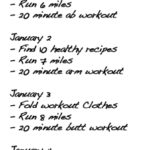So many people try to use their weight as their fitness metric, but the fact is that, at best, your weight is just 1/8 of the picture. Let’s take a look at 7 of the other parts of the story – and see if we discover some new (and maybe more meaningful) numbers and goals to help track your health and fitness improvements.
 1. Body Fat Percentage
1. Body Fat Percentage
More than how much you weigh, your body fat percentage, or the amount of your fat (adipose) tissue as compared to the rest of you (lean body mass, which includes muscles, bones and organs) is important for predicting and preventing disease and affecting how you look. If you lose 10 pounds of muscle, you will look a lot less “toned” than if you lose 10 pounds of fat – that’s why it’s important to move your body and give yourself the right nutrition when you’re trying to make changes. All pounds are not created equal.
At Tiny Fitness, we measure your body fat percentage at least every 3 months to make sure your movement, nutrition, and lifestyle factors (like sleep and stress) are all on the right track.
A good goal: most men under 40 are happiest with the way they look and feel between 14 and 18% body fat, while the “healthy” range is considered to be roughly 8-19%. For women under 40, the “healthy” range is 21-33%, while most women are happiest with the way they look and feel between 22 and 27% body fat.
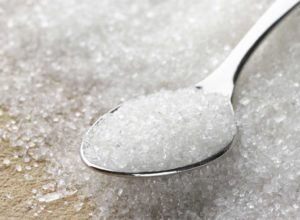 2. Blood Glucose Levels
2. Blood Glucose Levels
What?! It’s true – even if you’re not pre-diabetic or diabetic, your blood glucose levels really matter. If nothing else, know that blood sugar issues can cause you to store extra body fat – and, over time, by skipping meals, eating erratically, and/or eating lots of carbs on their own (or lots of simple carbs in general) can all build up and cause insulin resistance, which is the first step toward metabolic syndrome and/or type 2 diabetes.
I won’t take your blood at Tiny Fitness, but make sure you note your numbers at your annual physical! If you’re in Houston, lots of pharmacies and HEBs offer free or very low-cost numbers checks monthly, so it’s convenient to drop in and learn your blood sugar and cholesterol numbers (you often need to have fasted for 8 hours before your test, so plan ahead).
A good goal: a healthy fasting blood sugar is typically given as the range between 60-100 mg/dL, although research suggests that levels of 80 and under are good predictors of disease prevention. Talk to your health professional about what a good number is for you, and be sure to have it checked at least every year. Consistent exercise and nutrition have a big impact on your blood sugar!
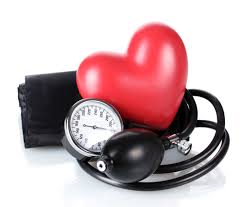 3. Blood Pressure
3. Blood Pressure
It’s as easy as slipping your arm into the squeezy machine at the grocery store – so do you know your typical blood pressure? It’s a great thing to keep an eye on as you begin a fitness program, because you might be surprised how quickly you can keep your blood pressure in a healthy range with regular activity.
We don’t test this at Tiny Fitness, but we do talk about it in your fitness assessment. This is a result that will often show up even before the scale moves!
While some high blood pressure (anything over 120/80 for most people) is genetic, almost all of us (even those with genetic predisposition) can decrease our risks of heart attack, heart failure and sudden cardiac death by keeping this number under control. You don’t have to train for a marathon – you should see benefits from something as simple as walking regularly!
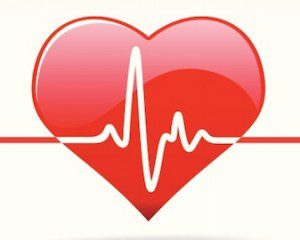 4. Resting Heart Rate
4. Resting Heart Rate
As you train consistently, your heart becomes more efficient, and so your resting heart rate (RHR) should decrease. This metric is another potential predictor of cardiac risk – so, while we don’t need to drop to 5 beats per minute, studies do suggest that it’s best to be on the lower end of the 60-100 range that is usually considered “healthy”.
A high RHR can indicate issues like dehydration, lack of sleep, stress, and even clogged arteries. Tracking your heart rate can be done by manually counting beats or by using a free app on your phone, and it’s important to take several different readings at different times of day (and while at rest, not in the middle of a stressful meeting or at the end of your workout) to determine your true RHR.
Lowering your RHR doesn’t usually require intense cardio training – it’s another metric that can change just from consistent walking and other movement.
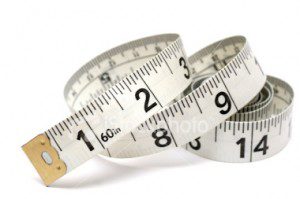 5. Waist Size
5. Waist Size
Don’t try to cut yourself in half with the tape measure to get your numbers down! Waist size isn’t all about aesthetics – it’s a critical indicator of your health. A waist larger than 35 inches (for women) or 40 inches (for men) is typically associated with increased risk of type 2 diabetes and heart disease.
Fat that builds up around your waist – whether it’s close to the surface or, worse, around your organs – often comes from poorly managed cortisol, the stress hormone. Cortisol rises from things we would think of as “stress”, like problems at work or difficult roommates, but also “stress” like consuming a diet high in sugar and low in vitamins, drinking lots of alcohol, lack of sleep, and lack of activity – or even working out too hard.
At Tiny Fitness, we check in on your waist size at least every three months, but usually far more often. If everything is going well with your fitness program, including your lifestyle factors, this will probably be the first number to change. Great for your jeans, but even better for your health.

6. Waist to Hip Ratio
Put away your waist trainer and your corset – this isn’t an aesthetic issue. Your waist to hip ratio, or the comparison between the size of your waist and the size of your hips, is an easy way to estimate the amount of visceral fat (that fat from metric #5 that is between and around your organs) that you’re carrying. This fat is your most dangerous fat, because it’s where that heart disease, hypertension, and diabetes risk is coming from. For males, this number should be under .95 (but under .85 is excellent), and for females the goal is to be under .85 (but under .75 is excellent). To calculate yours, just divide your waist measurement by your hip measurement!
We calculate this for each of our clients at Tiny Fitness, whether they know it or not! If you’re eating a relatively balanced diet, moving consistently, and managing your stress and sleep effectively, this number should also change quickly.
In fact, the workouts and nutrition guidance at Tiny Fitness are designed to help you lose that visceral fat as quickly as possible – so remember that, when you feel like things aren’t changing as fast as you might like, you need to look to numbers like these to see the real benefits of your program. As your body starts functioning better, all of the other changes will fall into place more quickly.
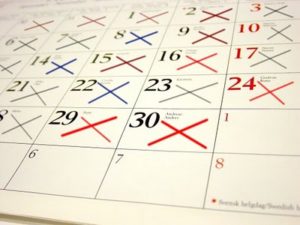 7. Consistency
7. Consistency
The key to changing those first 6 metrics (and even the scale) is found here in #7: consistency. This number will be different for everyone, but consistently eating in a balance that is right for you, consistently moving in your strength and cardio workouts, and consistently managing your sleep and stress will pay off much more rapidly than sporadic cleanses and zealous overtraining.
If you’re looking for another metric to track, make yourself a star chart or find any system that works for you to see how consistent you are in your eating and movement. Can you reach your goals for 4 straight weeks? 8? 12? 52? Consistency doesn’t mean perfection – it’s just about staying in the range that’s best for you.
For example, if your goal is to get in 2 strength workouts and 120 minutes of cardio activity every week (not a bad goal, might I add), it’s ok if some weeks you only get to 90 minutes of activity or 1 strength workout – especially if most weeks are on target. If your goal is to eat about 1700 calories a day, with about 30% of that coming from protein, don’t worry about a day here and there that’s at 1400 or 2200, or a day with “too many” carbs every now and then – especially if most days are on target.
When you’re evaluating your fitness progress or setting your goals, don’t forget about these 7 important numbers. These are the metrics that will let you know if your workouts and nutrition are really working for you – and what to change if your program needs a tune-up.

